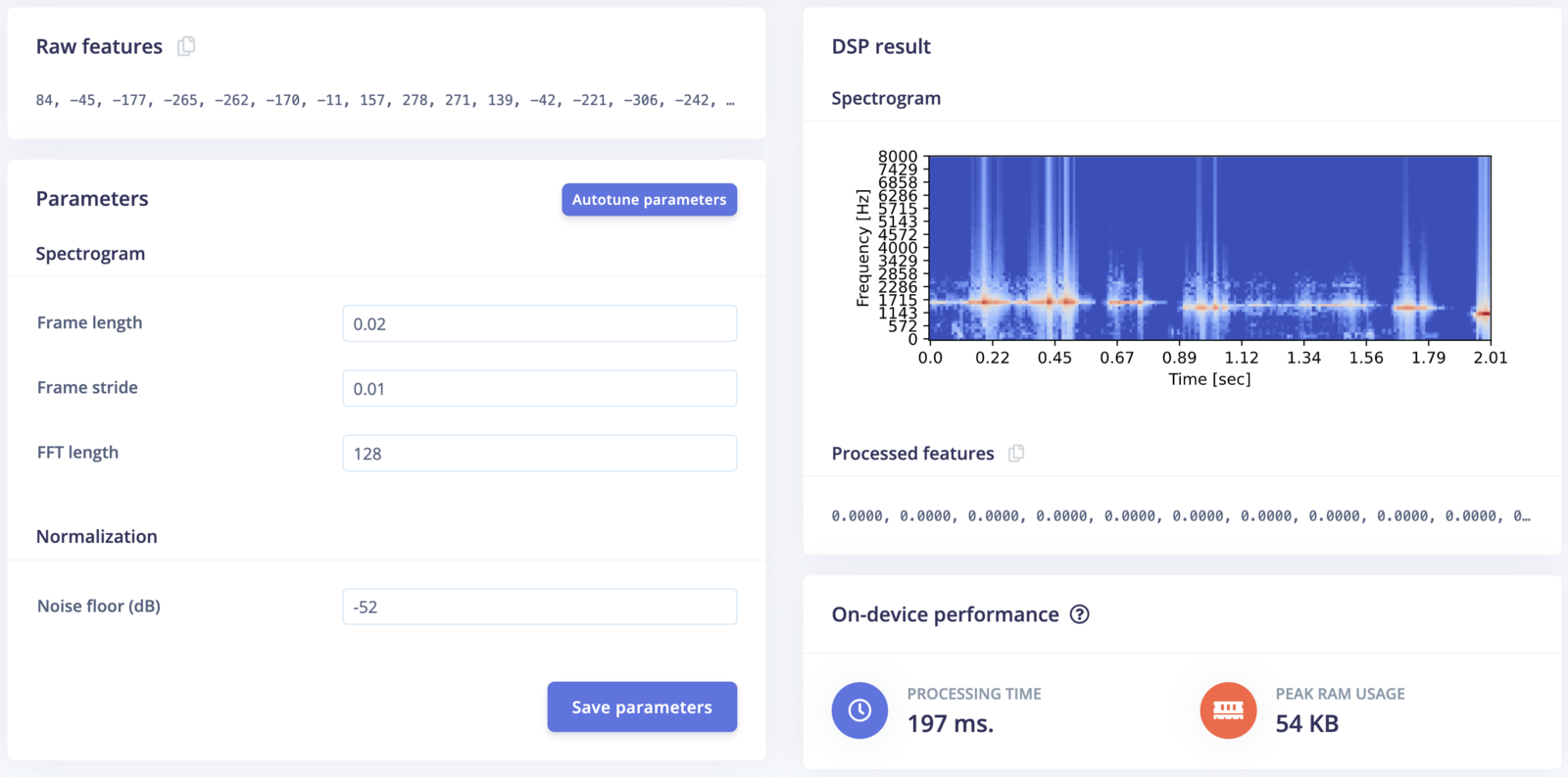
Spectrogram parameters overview
Spectrogram parameters
Compatible with the DSP Autotuner
Picking the right parameters for DSP algorithms can be difficult. It often requires a lot of experience and experimenting. The autotuning function makes this process easier by looking at the entire dataset and recommending a set of parameters that is tuned for your dataset.- Frame length: The length of each frame in seconds
- Frame stride: The step between successive frame in seconds
- FFT size: The size of the FFT for each frame. Will zero pad or clip if frame length in samples does not equal FFT size.
- Noise floor (dB): signal lower than this level will be dropped
How does the spectrogram block work?
It first divides the window in multiple overlapping frames. The size and number of frames can be adjusted with the parameters Frame length and Frame stride. For example with a window of 1 second, frame length of 0.02s and stride of 0.01s, it will create 99 time frames. An FFT is then calculated for each frame. The number of frequency features for each frame is equal to the FFT size parameter divided by 2 plus 1. We recommend keeping the FFT size a power of 2 for performances purpose. Finally the Noise floor value is applied to the power spectrum. The features generated by the Spectrogram block are equal to the number of generated time frames times the number of frequency features.Frequency bands and frame lengthThere is a connection between the FFT size parameter and the frame length. The frame length will be cropped or padded to the FFT size value before applying the FFT. For example, with a 8kHz sampling frequency and a time frame of 0.02s, each time frame contains 160 samples (8k * 0.02). If your FFT size is set 128, time frames will be cropped to 128 samples. If your FFT size is set to 256, time frames will be padded with zeros.